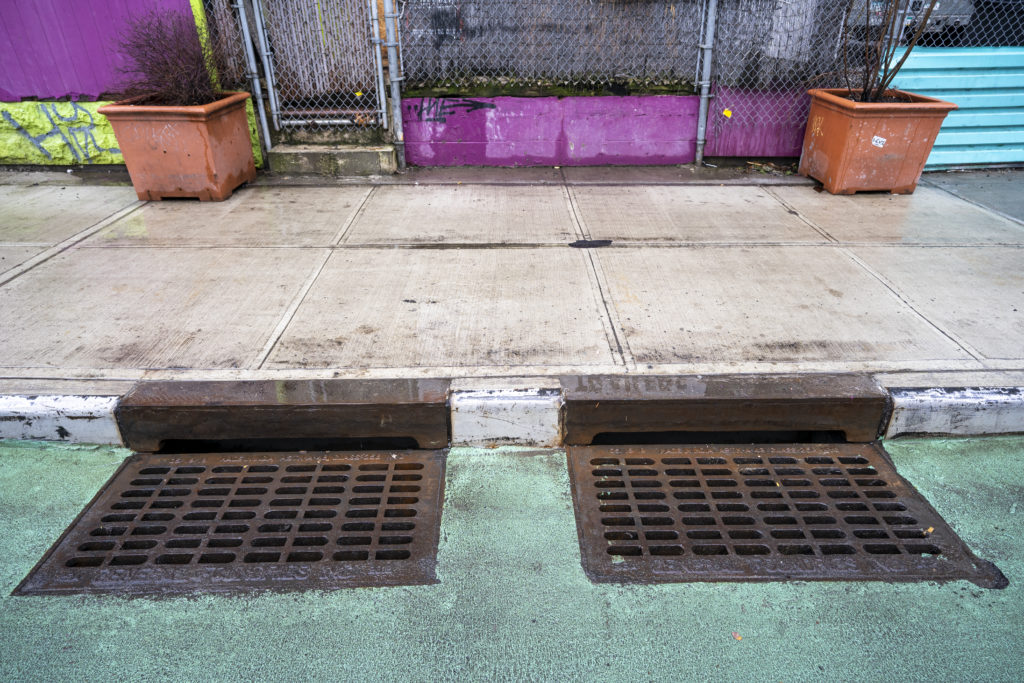GOWANUS — City officials recently announced the completion of a $27 million sewer expansion plan along Ninth Street and Second Avenue that will reduce flooding on Gowanus’ low-lying streets, as well as limit the amount of pollution entering the neighborhood’s canal.
The sewer upgrade complements a larger $53 million storm sewer project that the Department of Environmental Protection is conducting that will create nearly three miles of high level storm sewers along Third Avenue.
Originally anticipated to be finished by next summer, the project’s completion comes as welcome news for Gowanus residents all too familiar with their streets turning into raging rivers during routine rainstorms.
“The new catch basins and storm sewers along Ninth Street have already improved drainage and helped to reduce the flooding that in the past has made this important east-west connection impassable during heavy rain storms,” said DEP Commissioner Vincent Sapienza.
“This work will also complement the more than $200 million we have already invested to help improve the health of the Gowanus Canal — including the upgrade of the Flushing Tunnel and Pump Station, the construction of curbside rain gardens and the new storm sewers being built along Third Avenue.”

During heavy downpours, stormwater and wastewater overwhelm the city’s sewer systems, causing the mixture, known as combined sewer overflow, to be dumped untreated into waterways like the Gowanus Canal.
With rainstorms intensifying and happening more frequently each year, Brooklyn Borough President Eric Adams said it was essential that more projects be completed in and around Gowanus. He suggested the city consider relaunching its “Adopt-a-Catch Basin” initiative.
“With the reality of climate change and increased precipitation and flooding, we must ensure that we have the proper infrastructure in place to absorb and divert stormwater runoff such as rain gardens, green roofs and robust sewers,” he said.
Fed up with the neighborhood’s streets turning into impromptu lakes, local community groups like the Gowanus Canal Conservancy have taken matters into their own hands over the years. For example, the organization installed a Gowanus Canal Sponge Park in 2017.
DEP also installed 70 curbside rain gardens capable of collecting more than 6 million gallons of stormwater a year.

The gardens are spread out across the Gowanus Canal Watershed in Boerum Hill, Carroll Gardens, Gowanus, Park Slope and Prospect Heights.
GCC’s Executive Director Andrea Parker praised the city’s completion of the sewer project, but urged stakeholders in the community to continue their efforts toward achieving a cleaner Gowanus Canal with no CSO entering its waters.
“This relatively quick schedule minimized the construction impacts on area businesses and residents and delivered critical infrastructure upgrades sooner,” Parker said. “As we look forward to an area-wide rezoning, there is a need and opportunity for the city and private developers to continue to invest in infrastructure that will increase our sewer capacity throughout the Gowanus Watershed, to ensure a net-zero-CSO rezoning and a cleaner, safer and healthier neighborhood for all.”

 Former deli owner Helene Bakke dies
Former deli owner Helene Bakke dies  Senior killed by own car
Senior killed by own car